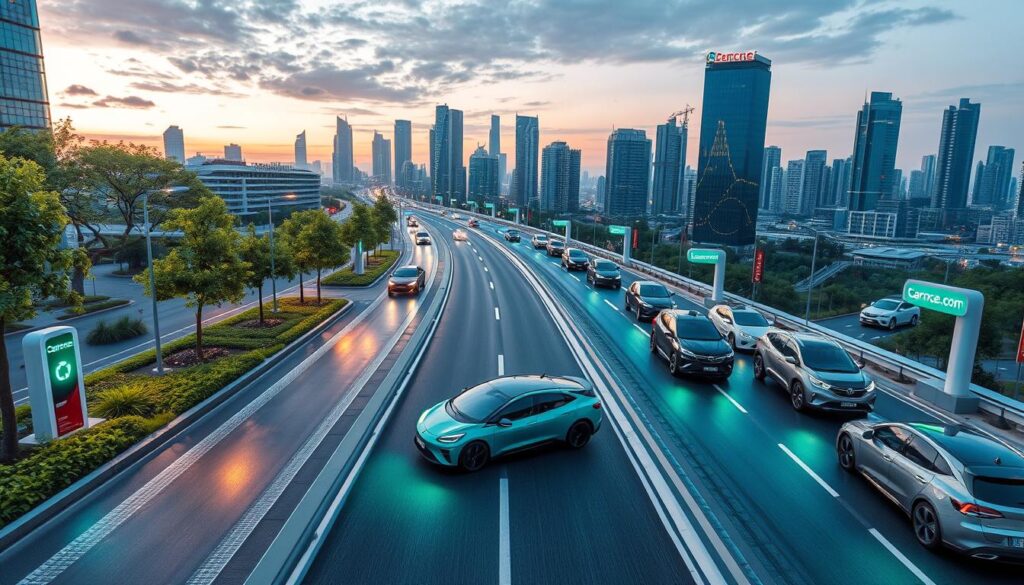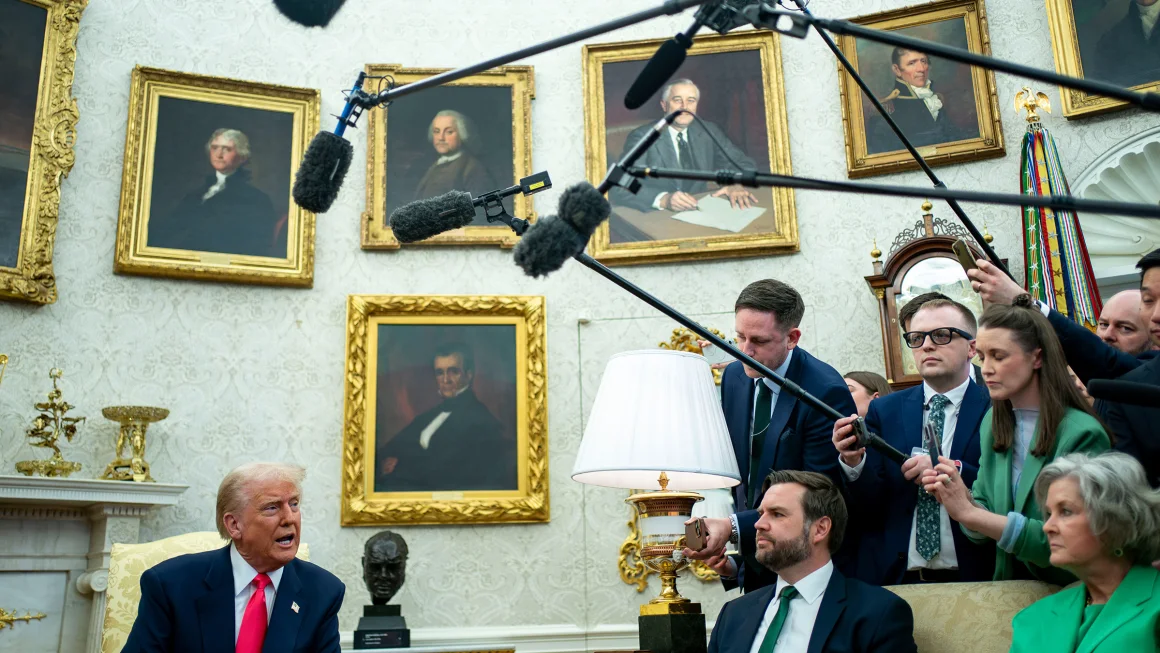
Have you ever thought about how cars and their relationship to the economy are connected? The car industry is more than just cars. It’s a key player in America’s economic health. It has helped create jobs, boost spending, and grow manufacturing, showing its vital role in the U.S. economy.
After World War II, car ownership soared. It went from 31 million to 59 million by 1954. By 1973, cars had become a big part of the national economy, making up nearly 5% of the GDP. Today, the car industry faces new challenges and innovations. Knowing how it has changed helps us predict its future impact on the economy.
Key Takeaways
- The automotive industry significantly shapes job markets and economic activity in the U.S.
- Post-war vehicle ownership trends illustrate the growth of consumer reliance on automobiles.
- Car sales trends directly correlate with U.S. GDP, serving as a critical economic indicator.
- Understanding the history of the automotive sector helps anticipate future economic fluctuations.
- Innovation in vehicle technology can redefine economic growth opportunities.
The Historical Context of the Automotive Industry’s Economic Influence
The automotive industry’s growth is key to understanding America’s economy. It has shaped the country’s economic growth over the years. This history shows how the industry has influenced the economy and consumer behavior for a century.
Evolution of Car Production in the U.S.
The U.S. automotive history started in the late 19th century. Small makers built cars by hand back then. Henry Ford changed everything with mass production.
This made the U.S. a leader in cars by the early 20th century. By 1916, over three million cars were registered, showing fast growth.
Post-World War II Economic Boom and Vehicle Ownership
After World War II, car ownership changed a lot. People moved from a war economy to one focused on buying things. This led to a huge increase in car numbers.
By the late 1960s, over 100 million cars were registered. Veterans, suburban growth, and more highways helped this rise. Cars became a big part of American life.
Impact of Oil Crises on Car Sales and Manufacturing
The oil crises of the 1970s changed the car industry a lot. Companies like Ford and General Motors had to make cars that used less fuel. This big change made the industry rethink how it made and sold cars.
It led to a focus on making cars that were more efficient and cost-effective. This shift changed what cars were made of and how they were marketed.
Cars and their Relationship to the Economy
The automotive industry is a key player in the U.S. economy. It boosts GDP and creates jobs in many areas. Knowing the latest job numbers helps us see how important it is for people and the economy.
Contribution of the Automotive Industry to GDP
The auto sector has a big impact on the economy. It adds about 2.7% to the U.S. GDP, which is around $750 billion. This shows how vital it is for the economy’s health.
With over $1 trillion from car sales and services each year, it drives the economy. It also links closely with consumer spending, showing how it reflects the economy’s state.
Employment and Economic Activity in the Auto Sector
Jobs in the auto industry are plentiful, with over 2.8 million people working there. The industry not only creates these jobs but also supports 10.5 more jobs in related fields for each one. This shows how it boosts economic activity in many areas.
Every year, the industry pays out about $702 billion in wages. This helps many American families financially. It also brings in nearly $280 billion in taxes at all levels of government.
As the demand for vehicles grows, especially for light trucks, this sector is key for jobs and keeping the economy strong.
The Current State of the Automotive Market
The automotive market in the United States is changing a lot. The COVID-19 impact on car sales has been big, affecting both demand and production. The industry is adjusting to new consumer behaviors and electric vehicle trends are changing the game. But, it still faces challenges like supply chain issues and semiconductor shortages.
Effects of the COVID-19 Pandemic on Car Sales
The pandemic hit the automotive sector hard. Car sales dropped over 30% in the first half of 2020. By 2022, sales fell to 13.7 million units, the lowest since 2011. But, people started buying personal vehicles again, helping the market recover by the end of 2020.
Electric Vehicle Trends and Their Economic Implications
Electric vehicles are becoming more popular. By 2030, EVs could make up 30% of U.S. sales, up from 5% now. Big investments are being made, like Stellantis and LG Energy Solutions’ $3.5 billion battery plant. This shift could have big economic benefits, with the U.S. electric powertrains and batteries market expected to grow to $128 billion by 2035.
Challenges: Supply Chain Issues and Semiconductor Shortages
The automotive sector is facing big supply chain challenges. The ongoing semiconductor shortages are limiting production, leading to higher prices and longer wait times. The number of distressed automotive suppliers has increased, showing how fragile the supply chain is. Companies are working hard to stabilize production while adapting to market changes, highlighting the need for skilled workers in engineering and technology.

| Year | Vehicle Sales (m) | Average Price of New Cars ($) | Electric Vehicle Market Share (%) |
|---|---|---|---|
| 2020 | 8.6 | ~35,000 | ~2 |
| 2021 | 12.3 | ~45,000 | ~5 |
| 2022 | 13.7 | ~50,000 | ~8 |
| 2030 (Projected) | Projected Growth | Expected Increase | 30 |
The Future Outlook for the Automotive Industry
The automotive industry is on the brink of a major transformation. Changes in consumer behavior and technological advancements are driving this shift. Electric and autonomous vehicles are becoming more common, thanks to new technologies.
Understanding the impact of regulations and the need for better infrastructure is key. These factors will shape the future of the industry.
Shifts in Consumer Behavior Towards Vehicles
Younger generations are changing how they view cars. Millennials and Gen Z are less interested in owning cars. Instead, they prefer ridesharing and public transport.
This shift challenges the industry. It needs to rethink its sales strategies and what it offers to customers.
Innovations and Their Impact on Economic Growth
New technologies in cars could boost the economy. Investments in AI, electric vehicles, and green manufacturing are creating jobs. These changes could also lead to more money from connected cars.
By 2035, connected cars could make $1,600 per vehicle each year. Autonomous vehicles could open a $10 trillion market by then.
Anticipated Changes in Regulation and Infrastructure Development
Car makers face new rules on emissions and sustainability. Laws supporting electric cars will need more charging stations. This will require big investments in infrastructure.
Working together, car companies, tech firms, and governments will shape the industry’s future. Their collaboration is crucial.

| Year | Predicted New Car Sales | Market Highlights |
|---|---|---|
| 2024 | 15.5 million | High interest rates impacting affordability |
| 2030 | 100 million | Global vehicle parc expected to reach 2 billion |
| 2035 | N/A | Autonomous vehicles could unlock $10 trillion market |
Conclusion
The automotive industry has a big impact on the U.S. economy. It has reached many milestones and is key to our daily lives. As people’s needs change and new tech emerges, it’s crucial to understand the future of car making.
This industry must keep up with new demands and green standards. It also needs to keep helping the U.S. economy grow.
Car use has big effects on the U.S. economy. It raises costs for families and requires more money for roads. The U.S. spends a lot on roads compared to other countries.
As traffic gets worse, it hurts businesses and workers. This shows we need to rethink how we use land and plan cities.
In short, the car industry is changing and brings both chances and hurdles. It can grow by being innovative, following rules, and focusing on the environment. The future looks bright for the U.S. economy if we’re smart and creative.
FAQ
What is the significance of the automotive industry to the U.S. economy?
The automotive industry is a big player in the U.S. economy. It adds about 3% to the country’s real GDP. It also makes up nearly 7% of manufacturing value added. This industry is key for jobs and consumer spending.
How has car ownership evolved in the U.S.?
Car ownership in the U.S. has changed a lot, especially after WWII. The number of registered vehicles went from 31 million in 1945 to over 100 million by the late ’60s. This growth was due to more suburbs and a good highway system.
What impact did the COVID-19 pandemic have on automotive sales?
The pandemic hit automotive sales hard. Demand and production fell from 17 million in early 2020 to 8.6 million by April. But, a move towards personal vehicles helped sales bounce back by the end of 2020.
What are the current trends in electric vehicle (EV) adoption?
EV adoption is growing, but it faces challenges like high costs and limited charging spots. The Inflation Reduction Act aims to boost adoption and improve EV’s economic outlook.
How do supply chain issues affect the automotive industry?
The ongoing chip shortage has limited vehicle production and raised prices. It shows how much the industry relies on global supply chains. It also highlights the challenge of keeping production going.
What are the anticipated shifts in consumer behavior regarding vehicle ownership?
Millennials and Gen Z are showing less interest in owning cars. This trend suggests a move towards ridesharing and public transport as alternatives.
How are innovations in the automotive sector expected to impact economic growth?
New tech like AI, autonomous vehicles, and green manufacturing could boost economic growth. They also promise to create new jobs in the automotive field.
What regulatory changes are expected in the automotive industry?
Expect rules on emissions and EV incentives. Also, there will be more investments in EV charging stations. These changes could drive growth and innovation in the sector.







